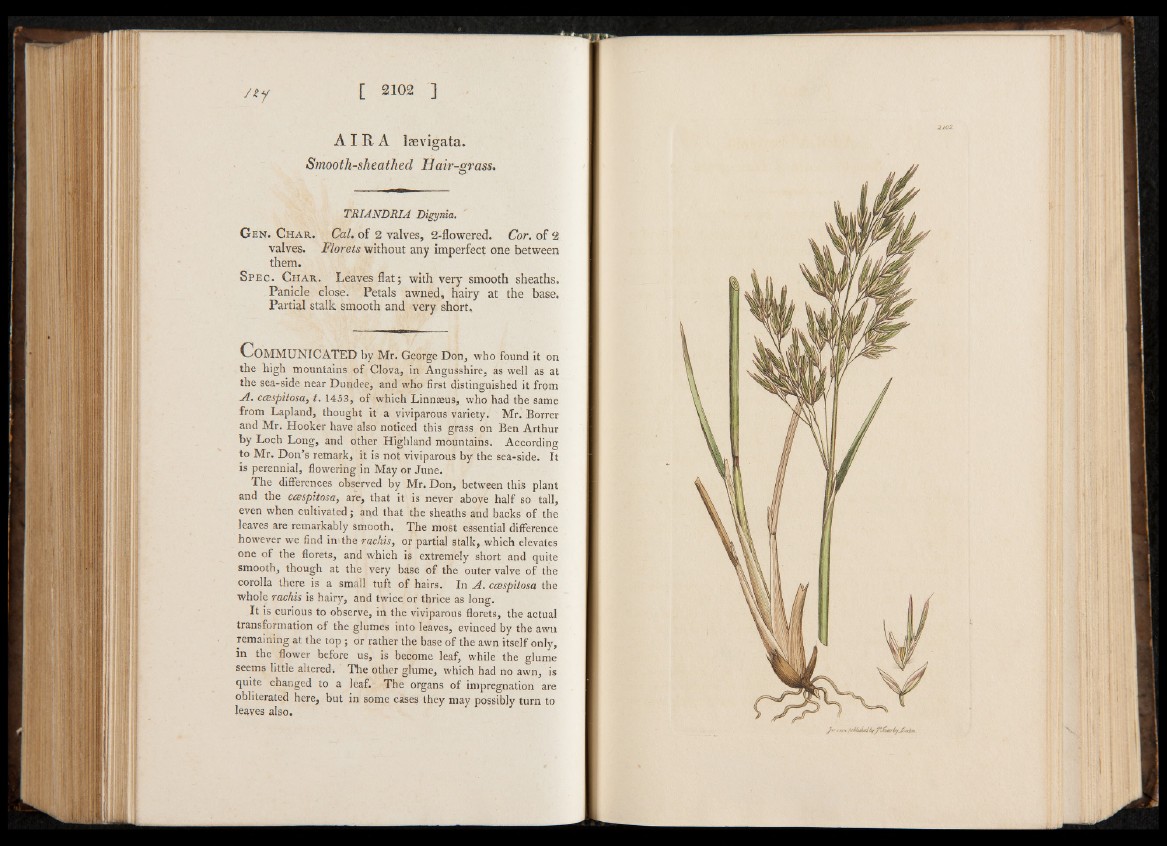
A I R A laevigata.
Smooth-sheathed Hair-gOrass.
TRIANDRIA Digynia.
G en. C har. Cal. of 2 valves, 2-flowered. Car. of 2
valves. Florets without any imperfect one between
them.
Spe c . C h ar. Leaves flat; with very smooth sheaths.
Panicle close. Petals awned, hairy at the base.
Partial stalk smooth and very short.
COM M U N IC A T E D by Mr. George Don, who found it on
the high mountains o f Clova, in Angusshire, as well as at
the sea-side near Dundee, and who first distinguished it from
A . cesspitosa, t. 1453, o f which Linnaeus, who had the same
from Lapland, thought it a viviparous variety. Mr. Borrer
and Mr. Hooker have also noticed this grass on Ben Arthur
by Loch Long, and other Highland mountains. According
to Mr. Don’ s remark, it is not viviparous by the sea-side. It
is perennial, flowering in May or June.
The differences observed by Mr. Don, between this plant
and the cesspitosa, are, that it is never above half so tall,
even when cultivated; and that the sheaths and backs of the
leaves are remarkably smooth. The most essential difference
however we find in the rachis, or partial stalk, which elevates
one of the florets, and which is extremely short and quite
smooth, though at the very base of the outer valve of the
corolla there is a small tuft o f hairs. In A . ccespitosa the
whole rachis is hairy, and twice or thrice as long.
It is curious to observe, in the viviparous florets, the actual
transformation of the glumes into leaves, evinced by the awn
remaining at the top ; or rather the base of the awn itself only,
in the flower before us, is become leaf, while the glume
seems little altered. The other glume, which had no awn, is
quite changed to a leaf. The organs of impregnation are
obliterated here, but in some cases they may possibly turn to
leaves also.